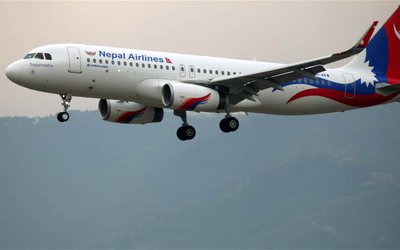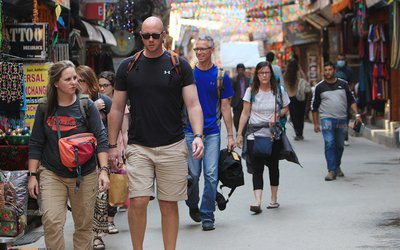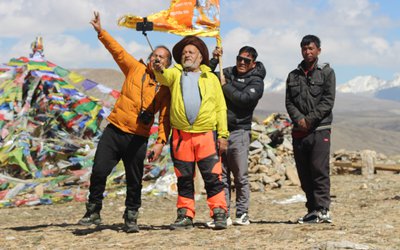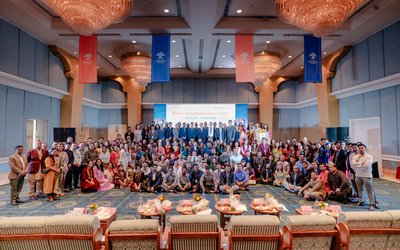More on Tourism




There must be something about Nepal. People continue to travel here despite the Global Financial Crisis and the political instability within Nepal itself. Tourists continue to come for various reasons – not all are coming to trek, and so what is it that keeps drawing crowds of visitors on the ever increasing flights coming in from around the globe, and how easy is it to be a traveller in Nepal?
As first impressions go, how many other countries can offer the stunning view that Nepal offers, immediately capturing the hearts and minds of passengers as they touch down at Kathmandu airport? The wall of mountains surrounding the Kathmandu valley makes for magical scenery that keeps luring tourists to the country, and moreover, a substantial amount for a second visit.
However, the Kathmandu airport can sometimes resemble a ghosttown – there are many dark corners and unused desks – unlike the glaring, well-lit airports that some travellers may be used to, always filled with the hustle and bustle of people twenty four hours a day. Passengers queue for their Visas – some after rummaging for some time amidst the paper strewn everywhere –and after watching their passport move through the production line of four or five workers, are able to collect their bags and be on their way.
Whilst Nepal is touted as one of the safest places for women to travel alone, exiting the Kathmandu airport can be a harrowing experience, especially for those travelling by themselves, or for the first time in a country less developed than their homeland. Travellers find themselves confronted by a wall of Taxi drivers screaming “Taxi! Taxi!” andpolitely decline each driver as they are forced to walk past this group in order to find friends or family they have arranged to meet. An ever helpful, but overzealous taxi driver might be suspiciously viewed by a tourist wary of trusting others, whereas after a short time here they will realise that the Nepali people are the kindest and most sincere that they may ever encounter.
As tourism accounts for around a third of Nepal’s GDP, these first impressions of Nepal, and its capital areof major importance. After the initial ‘wow’ factor of the Himalayas, tourists find themselves with no designated taxi rank or any organisation to the sea of Taxi drivers, and they must find themselves a taxi, or find their friend or tour official amidst the chaos, sometimes whilst also being harangued by porters wanting to carry their bags – for a fee, of course.
The second area a traveller is likely to visit is the busy shopping and hotel hub of Thamel, where unaccustomed travellers meet with the chaotic traffic and blaring noise pollution of the horns of countless Suzuki taxis that circle the tourist hot spot. For many, this area brimming with shops, clubs, cafes and restaurants is an endearing part of Kathmandu, lively and exciting. But for some this noisy suburb wears them down with the vendors spruiking their wares, inviting any passing person inside their shop, and the eternal whispers in travellers ears to purchase trekking tours, musical instruments, chess boards, tiger balm, or hashish.
Despite Thamel holding the concentration of foreigners in Kathmandu, within the limits of this tourist hub there is no identifiable tourist information centre – the Nepal Tourism Board’s Tourist Centre is actually located a lengthy walk from the heart of Thamel, or a 150 Rupee taxi ride (depending on your negotiating skills). Most foreigners are used to easy access to a Visitor Information Centre or booth in major cities, nearby to where most of the attractions are – in this case though, the Nepal Tourist Centre is next to the City Bus Park, but not near to any of the major attractions that tourists typically visit whilst in Kathmandu.
The Manager of Research, Planning and Monitoring within the impressive building reassures me that many tourists visit the Tourist Centre – there is an Ethnic Museum, and general information available. Mr Sharma has a positive outlook on the future of Nepal tourism, andaffirms that the best way to encourage further growth is through infrastructure. He explains that the NTB’s objective of making Nepal a “Premiere Holiday Destination” can only work if all levels of community are involved, and the NTB are working closely with communities where tourism is a major source of revenue. Mr Sharmaurges travellers not to draw parallels between developing and developed countries, but is comparison not an automatic response when entering a country other than your own?
It may be a long way to travel before the roads are paved and the streets are clean, but this year, according to Mr Sunil, has already been a bumper year for tourism in Nepal. I cannot help wonder at what it is that continues to bring foreigners to this country with its dusty capital and electricity cuts – but I know that I too, am one of the many captured under its spell.
The mountain ranges and stunning lakes will always be here, and one would hope that the generous nature and hospitality of its people will also never change. If these two aspects of Nepal remain constant, then with further development and growth, and perhaps a more stable political climate, how can Nepal’s tourism not flourish even more?
Jacqueline Damen Is An Intern From Australia




